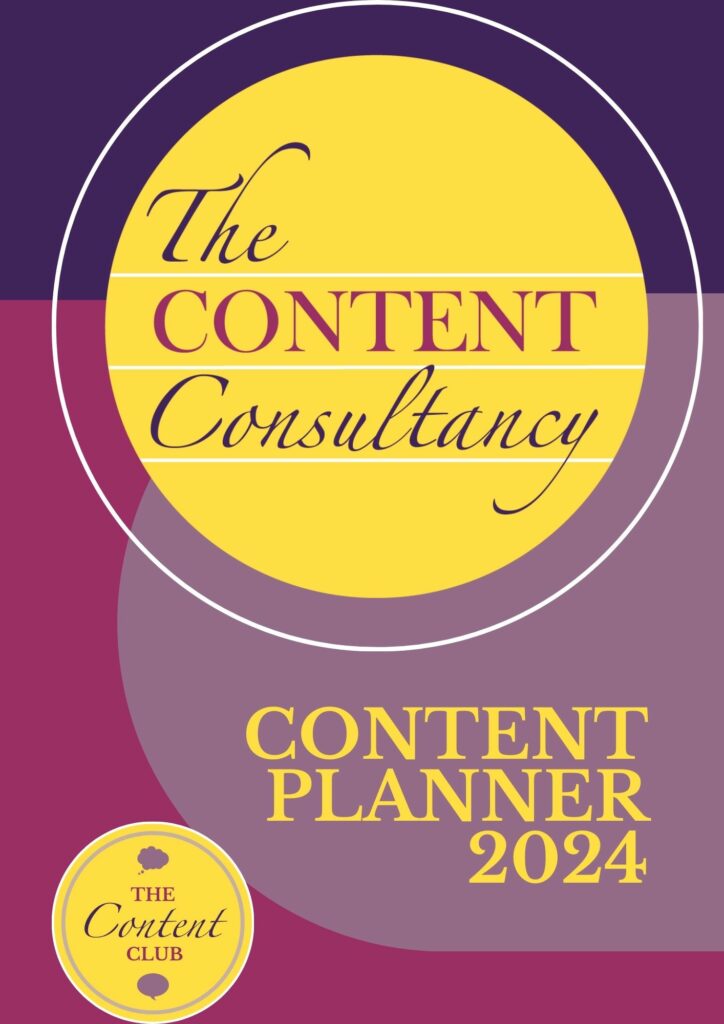
Benefits of Content Planning
Why plan your content?
You may think that ‘winging it’ has done well enough for you. Perhaps, you worry that planning content will mean you lose an element of authenticity. You may even love the excuse that you don’t have time to plan your content…but what if I told you that planning could save you time…and that planning reduces overwhelm, feelings of anxiety and guilt, as well as that dreaded ‘imposter syndrome’?
When you plan your content if gives you the time and space to reflect on what needs to be created and what you already have to hand. It means that you can make sure your content is actually doing what it’s meant to…i.e. more visibility, more sales and helping you to reach your business goals.
Let’s explore 5 benefits of content planning and, I hope, it will persuade you to make the time…in order to save you time in the long run.
5 benefits of content planning
1. Reduces overwhelm
When you have your monthly calendar in front of you, filled with content ideas it makes you feel good. I promise you! I have felt it!
Taking a step back, before you have planned your month of content, you should have a topic that is ‘feeding’ those content ideas and, even better, a business goal that your content is helping you to achieve for that month.
There is nothing worse than sitting at your computer or with your phone desperately trying to think of something to create. There is nothing worse than creating something in a rush that you know is rubbish. There is nothing worse than scrolling back through old content and cringing at how poor or disorderly it is because you know it was rushed and created without a plan in mind.
Been there…done that…let’s not do it anymore!
2. Helps you achieve your business goals
Take a watch of my Interconnected Content Marketing video and you can learn more about my approach to planning your topic on a monthly basis around a goal and a related theme.
For now, however, this is a good chance to remind you that marketing should lead to sales.
Therefore, your content plan and the subsequent content you created as guided by your plan should all come from the point of view of answering the questions ‘How am i going to sell more of X?’ or ‘How is this going to help me achieve Y goal?’
3. Gives you something to measure
In relation to above, if you plan your content, you are more likely to create items more consistently and with a purpose in mind. When you do this, when you check back on your plan and see how much you actually managed to achieve, you have something to measure against and reflect upon.
Even if you plan but don’t manage to actually create, schedule or post all of the content ideas you had, the plan itself becomes a useful document to reflect upon:
- Was your plan over ambitious?
- Did you not allow enough time to create all of the content?
- Did you still reach your business goal without all of the content you planned?
- What does this mean for the future of your content planning and how much content you need to create?
- Can you store the ideas for another month?
4. Saves you time
If you plan, using clear documentation, then there is no reason why you can’t reuse your plan in the months and years to come. It’s ok to reuse content, so it’s ok to reuse plans. If you plan January’s content in 2024…why not use a similar plan in 2025? …at least as a basis and with a bit of a tweak.
If you have a plan to look at, especially a detailed monthly plan which identifies what you are going to post on what day, you are never left staring into space trying to think of what to write or do. You can more easily batch content too, creating items in advance. You then simply publish or schedule when you need it.
You can also reuse and repurpose content when you have planned what you need. Consider what do you have to hand that will fill a gap…instead of constantly creating new.
5. Allows for spontaneity
This may seem counterintuitive but I believe planning allows for more spontaneity. I plan my content carefully on an annual and, then, monthly basis. I have a minimum content commitment and this is the absolute minimum amount of content that I commit to creating on a monthly basis. It basically boils down to 10-12 social media posts on Instagram, Facebook and LinkedIn, 1 blog posts and 1 email, on a monthly basis.
Once I know I’ve planned and created this (usually in a couple of days), this leaves me the rest of the month to share items, create stories, record videos, go networking, write direct emails and follow up leads. I can do whatever takes my fancy!
However, if I don’t do any of these things …it also doesn’t matter because I know I have enough to remain consistent and visible to my target audiences. That lack of pressure encourages me to do more…to be more spontaneous and authentic, creating content when I feel like it and when I’m really enjoying doing so.
From content strategy to planning
I know a plan sounds like a great idea, but it’s harder to actually do it. It’s easier if you have a content strategy to follow. If you want help with both, then please speak to me.
I am so delighted to be offer my new planner to help people in 2024.

Get support with using the planner and remaining accountable with what inside through The Content Club. We have quarterly planning sessions to help ensure planning and recording of your content creation in consistent.
Join us in a space of collaboration, support and guidance.
The information shared is extremely helpful! Thank you for sharing!
No problem at all!